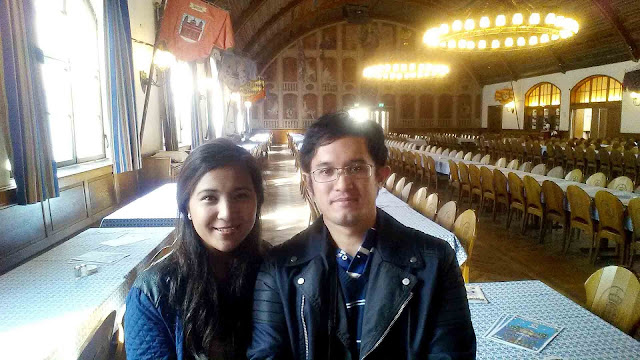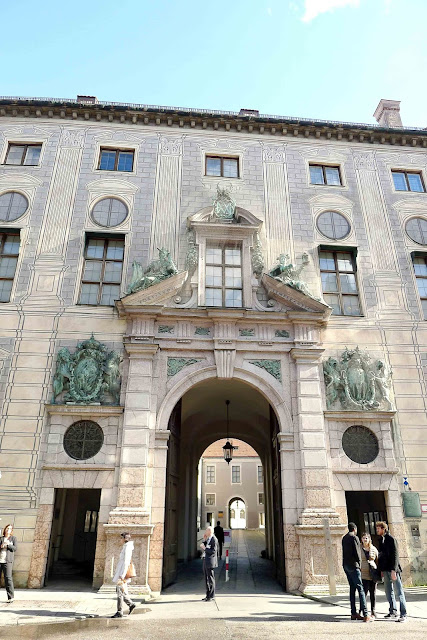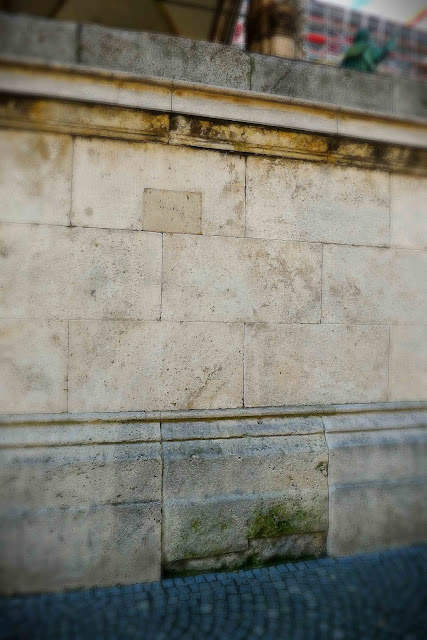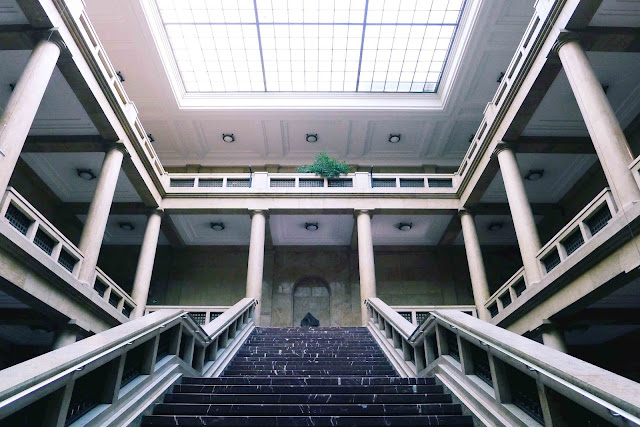Hitler's Munich and the Third Reich Tour
Munich, apart from being historical capital of the Kingdom of Bavaria, is also infamous for being the birthplace of the Nazi Party. It was in these streets, after the humiliating defeat at the hands of the Allies during World War I, that disenfranchised and unemployed young men started meeting regularly to debate and argue about the problems of the German people. Munich at this time was very politically charged, with communists, anarchists, liberals, and fascists arguing incessantly.
For most of the old photos found on this entry, a HUGE thanks to our friends over at http://www.thirdreichruins.com/munich.htm
* Munich's Town Hall, a beautiful landmark defaced by the disgraceful Nazi Swastika banner.
* Our guide for this almost three hour tour was the very enthusiastic and knowledgeable, Levi.
* This poignant memorial commemorates the spot where Joseph Goebbels, the Nazi Propaganda Minister, initiated the Kristallnacht (Night of the Broken Glass) wherein attacks on Jews and Jewish property were launched throughout Germany. This became the turning point for Nazi Germany in terms of changing the nature of the persecution against the Jews, and is often referred to as the beginning of the Holocaust.
* This unassuming office building currently selling smartphones, sim cards, and other gadgets has a dark past..
*.. That of being the first headquarters of the German Workers Party, predecessor of the Nazi Party.
* Munich's beer gardens also played a role in the rise of Nazism.
* For it was in these halls that passionate, angry, and charismatic young men delivered speeches that organically grew support for groups such as the Nazi Party, at a grassroots level.
* One of the main grievances of these young men was the three-year long period of hyperinflation in Germany which at one point saw One American Dollar be equivalent to 4,210,500,000,000 German Marks!!
* Blaming everyone (Jews, the German Government, Communists, the Allies) for their troubles, the Germans met in beer halls to complain about these conditions. Thus now, seemingly innocent areas of the Garden such as this kitchenware cabinet (above)
* Was actually the spot where Adolf Hitler practiced his rhetorical speech techniques.
* Anger, Frustration, Charismatic Speakers, and Beer make for a vary volatile combination.
* Along the way, we also saw some of Munich's most famous landmarks such as the Max-Joseph-Platz, named after King Maximilian Joseph, which contains one of the entrances to the home of the Bavarian Kings, the Residenz.
* The entrance to the Western Wing of the Palace is guarded by two lions, fondly known by locals as the Residenz Lions.
* The street along the entrance of the Western Wing; however, also has a dark past connected to the early days of the Nazis.
* It was along this street that the Beer Hall Putsch was suppressed. In a bid to seize power in Bavaria, Hitler and around two thousand loyal men marched to the center of Munich.
* Confronted by authorities along this street, the Nazis were stopped as soldiers loyal to the German Republic shot at the demonstrators, resulting in 16 Nazi deaths and wounding dozens more, including Hitler himself.
* Their planned destination was the Odeonsplatz, a site of important parades and public events in Bavarian History. It was here that the Nazis wanted to declare their takeover of the government.
* A shot of the Odeonsplatz when the Nazis finally succeeded in taking over Germania.
* As you can see in this old photo, the square never lost its status as an important staging ground. In fact, this area has been referred to as the "Spiritual Center" of Nazism.
* To commemorate the deaths of their comrades in the Beer Hall Putsch, Nazi officials decided to erect a memorial at the location where they were gunned down.
* And every year, the Nazis held a ceremony to honor their dead brethren.
* Here's a photograph of Rudolf Hess, Deputy Fuhrer, saluting the fallen.
* There was also a law requiring everyone who passed along this street to perform the Hitler Salute.
* However, citizens could passive-aggressively resist this gesture by taking a shortcut through an alley behind the memorial. Called the Viscardigasse or "Shirkers Alley", this action proved that not all Germans gave their wholehearted support to Hitler and his ideology.
* A few blocks away, an eternal flame burns for the victims of the Holocaust.
* And nearby, this innocent looking building hides its terrifying past; that of being the site of the original headquarters of the Nazi Gestapo.
* The Gestapo was the secret police of the Nazis throughout Germany and German-Occupied Europe.
* Administered by officers of Hitler's elite unit, the SS, the Gestapo was notorious for their spy craft, use of torture, and other terror tactics in the performance of their duties.
* A replica of the former Gestapo HQ located at the lobby of the current building.
* Munich is full of numerous buildings built by the Nazis to serve administrative and bureaucratic purposes that are still standing to this day.
* The final stop on our tour was this intimidating and gloomy looking edifice...
* ...Once known as the Fuhrerbau (Fuhrer's Building); Hitler's official office in Munich.
* Historically, this was also the building where Hitler and the UK's Neville Chamberlain signed the Munich Treaty of 1938, which permitted the Nazi occupation of the Czech Republic in return for stopping all further aggression by Nazi Germany. Well we all know how that turned out for everybody..
* Today the building houses the University of Applied Sciences of Music and Theater. Still, I could not shake this eerie feeling of someone watching as I explored the hallways of this structure.



































Comments
Post a Comment